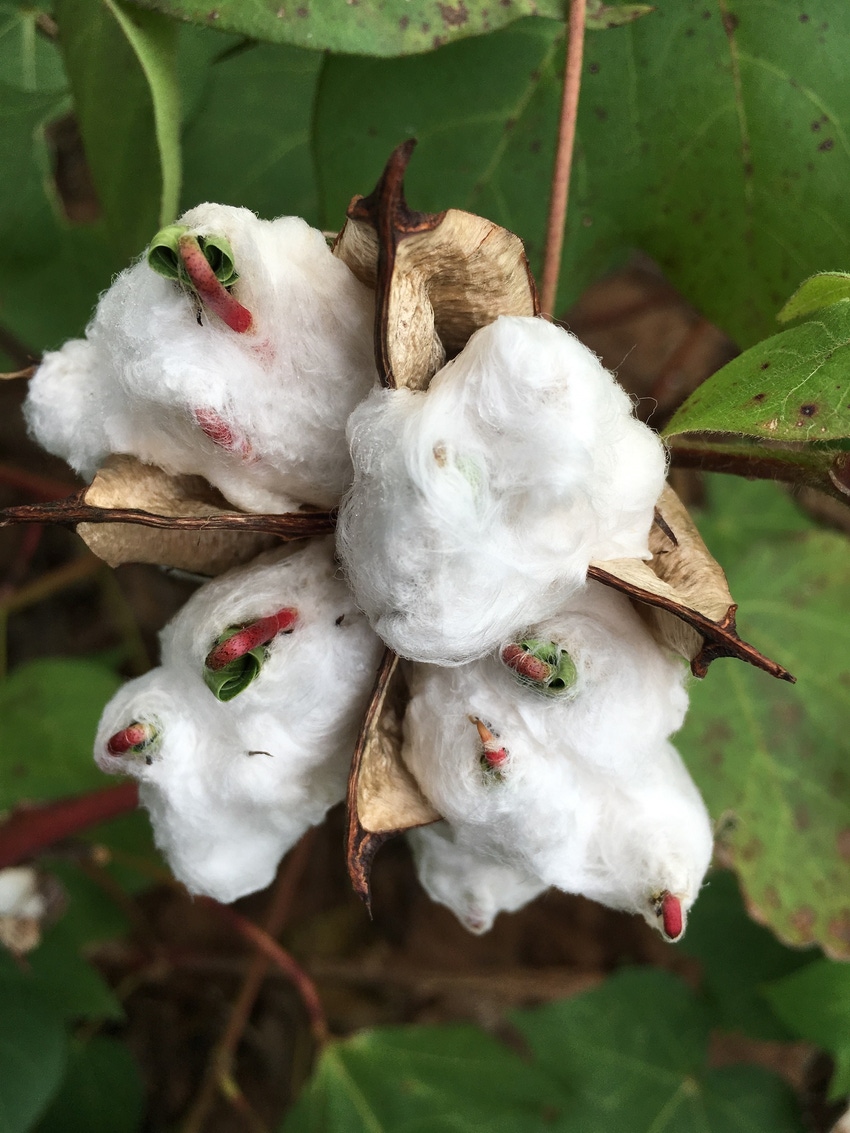September 9, 2016

While West Texas cotton crop prospect have improved over the last two weeks, thanks to timely rainfall, extended, untimely rains have Upper Gulf Coast and Blacklands farmers worried about yields and lint and seed quality.
Prolonged wet conditions have been detrimental to cotton fields in the Upper Gulf Coast and Blacklands, says Dr. Gaylon Morgan, AgriLife Extension cotton specialist, College Station.
“It’s a big issue, but we don’t know how big,” Morgan says. “We know lint and seed quality will be off quite a bit. The total impact on these estimated 375,000 acres will not be known until these fields are harvested, ginned and classed.”
Quality will depend greatly on whether rains stop or continue. Producers had cotton fields with open bolls, and many had defoliated their fields before the rain came.
Continuous rain over seven to nine days in the Upper Gulf Coast and Blacklands regions starting in mid-August caused a major cotton sprouting issue,” he says, and continued scattered showers since have delayed harvest. Those delays caused further degradation of fiber quality, and delayed harvest has prevented producers from knowing the extent of the damage.
ADDITIONAL DEFOLIATION COSTS
Most fields will require a second round of defoliation treatment, which is an additional expense on top of a decrease in lint and seed quality.
“It was not the amount of rain that fell, but that the rainfall occurred consistently over several days, and the cotton lint did not dry out, which provided a perfect environment for seeds to germinate,” Morgan said.
For the latest on southwest agriculture, please check out Southwest Farm Press Daily and receive the latest news right to your inbox.
Lint with sprouted seeds is problematic for ginning because it is difficult to separate the lint from the seed, and costly lint cleaning is required to obtain the best possible lint, he says. Producers will have to wait for everything to dry out, then harvest, gin and have their cotton classed to determine quality losses in seed and lint.
Without quality seed, producers will likely face additional costs, Morgan says, because they typically swap seed for ginning expenses.
Producers face investing more money to defoliate, harvest and complete the ginning process before lint can be classed to determine fiber quality discount. Lower color grades are expected to be the biggest discount at this point, but strength reductions and higher leaf grades are a possibility as well.
YIELD LOSSES EXPECTED
Also, some level of yield loss in fields is likely due to lint on the ground and hardlock bolls, he adds.
Morgan says a producer in the Blacklands compared lint values of fields harvested before and after the prolonged rains. The producer saw a 20 percent loss in lint value from wet fields compared to those harvested and ginned before the rains started.
Losses are expected to vary greatly with yields or staining, trash content, strength and color grade, and Morgan recommends producers visit with their insurance agents before counting fields as total losses.
“The hope is that the quality isn’t going to be as bad as expected,” Morgan says. “But the gins haven’t ginned much of the damaged cotton at this point, and we won’t know the level of lint and seed discounts until then. The take-home message is that we need to give these cotton fields every opportunity (for) the lint and seed to dry down and ‘bleach-out’ some of the stains. Otherwise, putting high moisture seed cotton into a module will further degrade lint and seed quality while the modules are waiting to be ginned.”
You May Also Like




